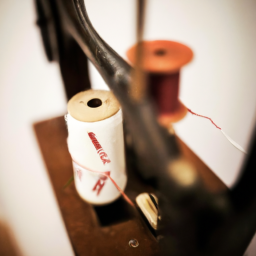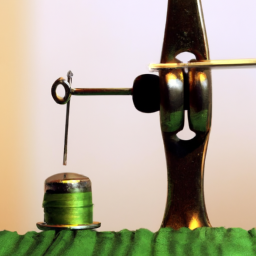
History of Sewing in India

India has a rich history of textiles and sewing, with a tradition that dates back thousands of years. The art of sewing has been an integral part of Indian culture, playing a significant role in the country’s economy and society over the centuries.
Sewing techniques and practices in India have evolved through different periods, influenced by various factors such as regional customs, available resources, and external influences. The skill of sewing was initially passed down through generations within families, preserved and refined by master artisans.
One of the earliest references to Indian sewing can be found in ancient texts like the Vedas and the Ramayana, where descriptions of clothing construction and embroidery techniques are mentioned. These texts provide valuable insight into the clothing styles and sewing techniques prevalent during that time.
Historically, sewing was not just limited to clothing. It extended to the creation of beautiful tapestries, bedcovers, and other decorative items. The use of intricate embroidery, embellishments, and stitching techniques like kantha, chikankari, and zardozi became widely known, showcasing the artistry and craftsmanship of Indian sewers.
During the Mughal era, sewing and garment-making reached its peak. The royal courts became patrons of sewing, leading to the development of intricate and extravagant outfits. Skilled artisans created garments using luxurious fabrics, intricate needlework, and precious materials like gold and silver threads, gemstones, and pearls, making these garments a reflection of extreme opulence and grandeur.

With the arrival of the British in India, sewing techniques underwent significant changes. Industrialization introduced sewing machines and mass production techniques, giving rise to textile factories in various parts of the country. The British influence also brought new sewing designs and garment styles, blending traditional Indian sewing techniques with contemporary Western designs.
Today, sewing continues to be an integral part of everyday life in India. From rural communities to urban cities, Indian sewers are highly skilled in a wide range of sewing techniques, from basic hand-stitching to operating advanced sewing machines. The popularity of Indian garments, textiles, and handicrafts worldwide is a testament to the rich sewing heritage of the country.
“The art of sewing in India is a beautiful amalgamation of tradition, skill, and creativity, passed down through the generations.”
Indian fashion designers have also gained international acclaim for their innovative use of traditional sewing techniques and craftsmanship. Indian garments, such as the saree, salwar kameez, and lehenga, have become synonymous with elegance, grace, and intricate embroideries that reflect the diversity and cultural heritage of the country.
In conclusion, the history of sewing in India is a fascinating journey that spans centuries. From ancient times to the present day, sewing has played a crucial role in Indian society, economy, and culture. The skill and artistry of Indian sewers continue to be celebrated, making Indian textiles and garments highly sought after worldwide.





Fascinating! Can’t wait to read this article.
Jane Smith: Wow, this looks so interesting!
I’m so intrigued to learn about the history of sewing in India! From traditional embroidery techniques to modern methods, this article is sure to be enlightening.